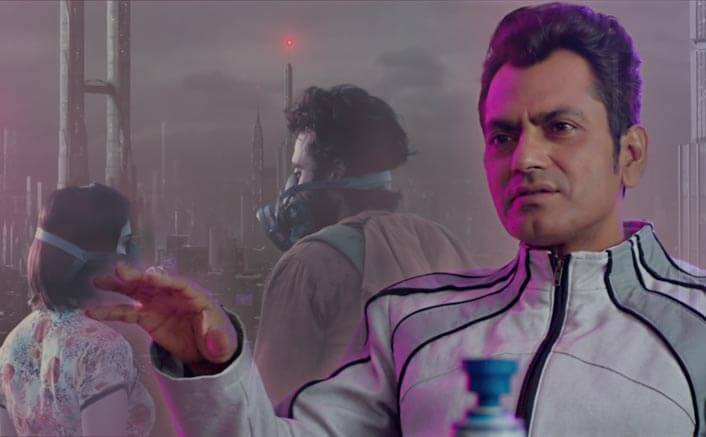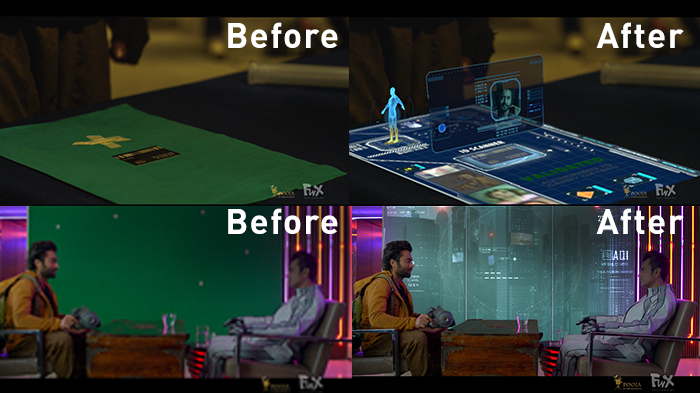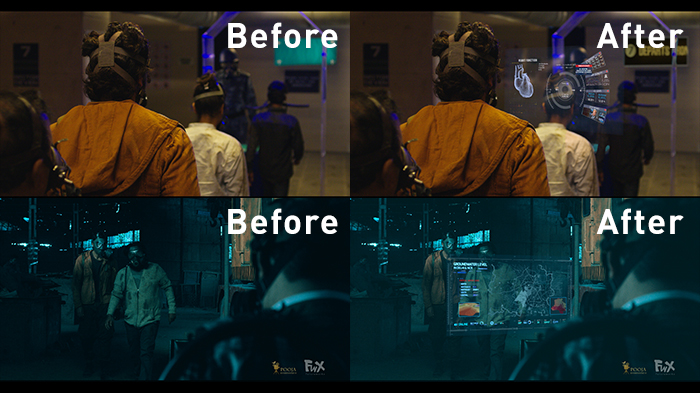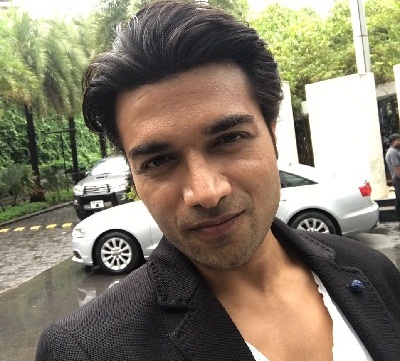
Global warming is a universal fact. But hardly have we seen a movie being spun around the issue. Yes, we can call this film and its VFX a rebel! Maitrey Bajpai and Ramiz Ilham Khan’s Carbon did, and took the digital space by storm.
A short film clocking at 25 minutes, the Jackky Bhagnani-starrer was released on August 28, 2017 on YouTube by Royal Stag Large Short Films. The movie garnered almost six million views already, and is flooded with appreciative feedbacks.
Animation Xpress caught up with Futureworks VFX supervisor Vinay Chuphal, who takes us behind the scenes and talks about the ideation process, the visual effects and a lot more about Carbon!

How did you go about the creative aspect of the film? Could you also describe the plot of it?
Vinay: I had a meeting with the director and the whole direction team, and in that itself we decided how will it look. Unlike the size of the buildings today, the buildings 50 years from now, how more number of people with migrate to city, the pollution that it will produce subsequently, and on the basis of certain sci-fi movies we got references. The movie is based in Delhi as there was a pollution issue last year. We eventually decided on making high-rise buildings with more than 100 storey in it, then made the city with CG.
Then there’s a sequence where Jackky goes to meet Nawaz who comes from Mars. Here, only the rich people have shifted to Mars to live. And they are coming down to earth to get pure oxygen. However in the conversation between Nawaz and Jackky, the former explains him how the ancestors are responsible for the mess. Also, the government is supplying impure oxygen whilst the water control too is in their hands. So despite hailing from the affluent class, people from Mars descend down on Earth for oxygen as the production is done here itself.
How did you create the futuristic buildings?
Vinay: It’s a mix of today’s as well as the buildings of the future. The notion was that the buildings of the future will be built on the top of what is already existing.
Will we get to see something out of the box?
Vinay: We definitely tried to do that. However we would get little time during the post production.
Was any particular software or technology used for the VFX of the movie?
Maya is the main software for 3D, which is also the most commonly used software today; composting was done on Nuke.
Have you used motion capture in the film?
Vinay: No. It wasn’t required.
What are the interesting VFX sequences according to you?

Vinay: Since the duration of the movie is as little as 22 minutes, there isn’t much scope for VFX. There’s more of dialogue in the film. Although there are a few scenes that have visual effects such as the factory scene for which we have produced smoke so that it looks polluted.
How big was the VFX team?
Vinay: It wasn’t too big given the short-film format of the movie. We had four to five working on CGI and another four for compositing.
How many VFX shots in all?
Vinay: Basically, the entire movie is VFX. The atmospheric feel, the smoke, the settings all involved VFX.
There are also visuals of another planet revolving in the trailer. Can you tell us more about that?
Vinay: Just a few days back India launched a few satellites into space, and now there are thousands of satellites in space in all. So 70 years from now, there might be pollution in outer space as well. We are trying to show how earth is getting surrounded by satellites, and as a result, is infected with dust and smoke.
How did you come up with it?
Vinay: It’s a full 3D creation and we made 40-50 satellites for it. Then we also did animation and composting for it.
Can you tell us about the use of oxygen masks in the movie?

Vinay: The masks were real. However, Jackky has an artificial heart in the movie. Due to immense pollution, there are a lot of cases of heart failures and in fact, babies are born with a still heart. Hence the device is used to make it function normally. And VFX is used for all the heart sequences.
Will we get to see any digitally created creatures?
Vinay: The movie won’t showcase anything as such. It isn’t an alien-based movie.
How were the factories and smoke created?
Vinay: We set-up the factories, but we artificially created the smoke, dust to give the look and feel of a polluted place.
There are a lot of blue, green and grey colour used in the movie. What is the reason behind it?
Vinay: We are just showing the whole texture. For example when we go to Kashmir, we see beautiful colours. But when there’s pollution and dust all around you, it looks ugly. So accordingly we coloured the backgrounds.
Futureworks founder and Carbon producer Gautam Gupta too, shares some of his thoughts on Carbon.

How did you visualise the settings of 2067?
Gautam: It’s quite impossible to imagine how 2067 could be. And the way things have changed since the 90s, the progress that our world has made, has been commendable. So what we did was try to represent our idea through VFX.
Could you tell us about the concept of water in the movie?
Gautam: There’s a shot in which you see the water is very expensive. There are no ways of storing water. We knew these issues may arise in future, so we created those 2-2.5 litre jars that we normally get, created an electronic lock on it with a beeper, which acts as an alarm system. This was done to show how expensive water gets in that time.
How big was the team, budget?
Gautam: Being a short film, there are cost constraints, as it is not an all out work. This was a small team, working extra hours, trying not to disturb the core part of Futureworks. This isn’t some best quality work, but to give this new medium some promotion is what we’ve done.
How has the response been?
Gautam: In such a short span it has already garnered 5.6 millions views, which is much higher than other short films featuring Naseeruddin Shah, Darshan Jariwala etc. I’m not comparing, but the element of VFX, the story and using conflict as environment has really excited people.
We hope more such science fiction films come in the future and up the level of VFX in Indian cinema!
